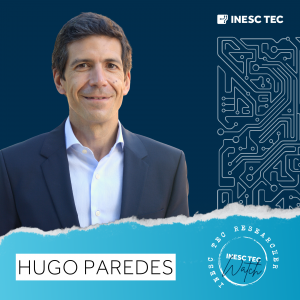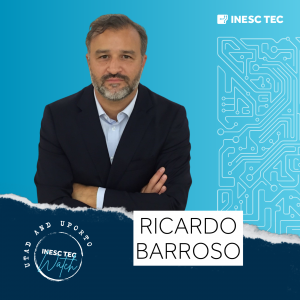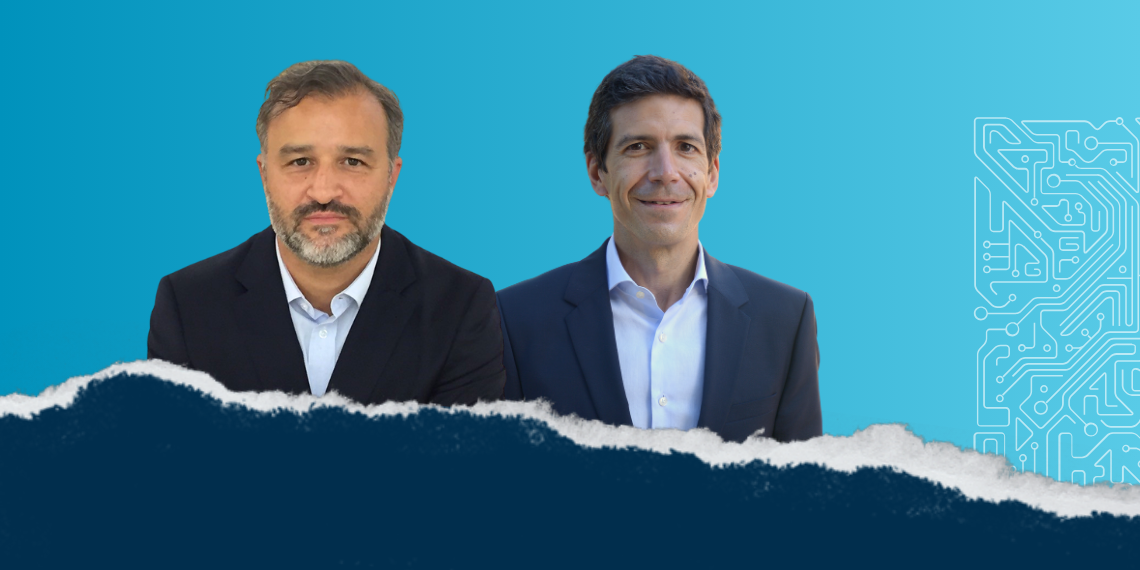“Technologies are constantly evolving, but too often technology designers and engineers only think about the benefits of the technologies that they’re building. We need to be able to deal with both the positive and the negative effects of the technologies we build.” Nicola Dell is an American researcher who develops technological solutions to help victims, particularly those suffering from domestic violence, as well as solutions to support healthcare professionals who provide home care. Nicola Dell is also one of the 22 people awarded by the MacArthur Foundation in 2024, through the MacArthur Fellows programme; this initiative grants financial support to people whose work stands out for their exceptional creativity and potential. We’re talking about people with careers in the most diverse areas: writers, artists, scientists, teachers, entrepreneurs, etc. In Dell’s case, her work focuses on supporting abuse victims, safeguarding them and protecting them from aggressors and how they can – and do – use technology to cause harm. We’ll talk about her work later.
In this edition of INESC TECWatch, we started from Dell’s work to analyse the role of information technologies in predicting the behaviours of violent people or in identifying risk patterns. To do so, we challenged Hugo Paredes, INESC TEC researcher in Human-Centred Computing and professor at the University of Trás-os-Montes and Alto Douro (UTAD), and Ricardo Barroso, psychologist with a specialisation in clinical psychology and forensic psychology, and also professor at UTAD.
Before proceeding with the analysis, we’d like to leave some data provided by the Portuguese Association for Victim Support (APAV), regarding International Women’s Day: between 2021 and 2023, the Association helped 31,117 victims of domestic violence and accounted for 64,899 crimes, with most of the perpetrators being the victims’ spouses. Also, 68.8% of the perpetrators were men. During this period, most victims supported by APAV were women (81.1%); the percentage of men was 17.3%. The Commission for Citizenship and Gender Equality (CIG), which provides indicators between 2019 and 2022, reported that, in 2022, there were 30,389 occurrences reported to the PSP and GNR, and 26 murders in the context of domestic violence – 42 women and two children.
What are the negatives aspects of technology?
We go back to early September 2024. From France comes a name – and a face: Gisèle Pelicot. According to the news, for over a decade, Gisèle Pelicot was successively drugged by her husband and raped by dozens of men – all orchestrated from an online platform called Coco. A chat without moderatos, that many believe to have contributed to various crimes. It has been deactivated this year.
In Portugal, and on October 22, the newspaper Público presented a great report with information about a Portuguese Telegram group: 70,000 people exchange, without consent, intimate pictures of women.
In a study published in 2021 – Abusive Sexting in Adolescence: Prevalence and Characteristics of Abusers and Victims – by Ricardo Barroso (UTAD and University of Porto), Eduarda Ramião and Patrícia Figueiredo (University of Porto), and Alexandra M. Araújo (Universidade Portucalense), the researchers analysed the prevalence of non-consensual sexting, i.e., sharing of pictures or videos with sexually explicit content through digital devices (usually unauthorised pictures of friends or former girlfriends) among Portuguese teenagers – besides the traits of both aggressors and victims. The team carried out a study with 4,281 participants (2,264 girls and 2,017 boys), aged between 12 and 20 years, and concluded that 4.8% of Portuguese teenagers claimed to have committed non-consensual sexting. 4.3% of the participants claimed to have been the victim of non-consensual sexting. Here are some other conclusions of said study: abusive sexting was more common among boys; victims of this practice are more likely to belong to single-parent families; involvement in non-consensual sexting – either by perpetrators or by victims – relates to behavioural and emotional issues, experiences of neglect and abuse in childhood, as well as other forms of aggression.
Moreover, non-consensual sexting – which, as we have witnessed, starts in adolescence – seems to lead to a more complex phenomenon: sextortion.
Is the use of chat platforms (like Coco) to commit crimes one of the negative aspects mentioned by Nicola Dell? Or maybe other resources, like WhatsApp or Telegram groups, in which several people share unauthorised and abusive intimate pictures and videos? How can perpetrators fully exploit digital technologies?
In her research work, this new MacArthur Fellow focuses on the safety and privacy of victims. Considering that perpetrators often use technology to, for instance, monitor victims’ online activity or to threaten or harass them using digital platforms, Dell’s team conducted a study to understand which tactics are used. The team analysed hundreds of posts on online forums – where, for example, users discuss ways to use malicious software (spyware) to access other people’s computers. According to the information available on the MacArthur Foundation’s website, this research showed that “security and privacy mechanisms on widely used devices and platforms fail to anticipate and prevent attacks from people with intimate knowledge of or access to the targeted individual”. A person with whom the perpetrator keeps a close and intimate relationship. In other words, victims are not safe when using their devices, like computers or mobile phones. In addition to exposing these system flaws, Dell’s work has also contributed to the development of new frameworks for security and privacy research to address closer and more personal threats.
Towards materialising her research results, Nicola Dell co-founded CETA – Clinic to End Tech Abuse, established to support victims through individual monitoring via the security of their devices. In other words, the CETA team analyses victims’ devices to detect spyware, helping them free themselves from joint accounts, and providing them guidance on privacy and security.
Finally, based on these findings, the American researcher advises technology companies like Google, Apple or Meta on technological abuse, providing guidelines on how they can design safer products; plus, she also contributes to the design of legislation that can protect people from this same abuse.
Privacy, pervasive data acquisition and the identification of patterns of risk behaviours

The privacy issues addressed by Dell lead us to data, how people acquire them and the development of predictive models, which can help identify patterns of risk behaviours, for example. According to Hugo Paredes, and concerning this field of information technologies, there is a wide set of challenges, starting with the acquisition of quality data so that professionals can develop predictive models. “Data is vital to the development of models. I believe that, in these areas, traditional instruments for data acquisition are based on questionnaires that the target-audience seems to dislike. Hence, pervasive data acquisition techniques, like the way people interact with smartphones or computers in their daily lives, may be associated with potential risk behaviours”, explained the researcher, also stating that “there are ethical and privacy-related concerns associated with their pervasive acquisition, which must be properly addressed”.
Before we go any further, we’d like to provide an example of pervasive data acquisition: our smartwatches collect data about our sleep, our physical activity, or our stress level. We wear them on our wrists for hours, and they (invisible to the eye) collect endless information – pervasively.
In any case, and returning to Dell’s work, Ricardo Barroso believes that the main benefits of her work relate to the potential to predict the behaviours of violent people, i.e., the real-time monitoring of the perpetrators’ behaviours. “I understand that it may be possible to anticipate episodes of violence and implement specific actions, notifying the authorities or the individuals at risk. This is a technical need in all countries, and the mechanisms currently in place present many flaws. This solution can be used to identify patterns of risky behaviour through data from social networks, text messages or others,” said the expert.
Thanks to this, and by understanding the patterns and dynamics of operation – especially among younger groups – it becomes possible to act preventively. “This system will enable immersive and personalised educational experiences on interpersonal violence and dating, through the use of interactive simulations that teach teenagers about healthy relationships, and help them identify signs of abuse, thus improving the effectiveness of awareness campaigns,” mentioned Ricardo Barroso. An opinion shared by Hugo Paredes, who believes that early intervention and education are areas where technology can be “a useful tool”, capable not only of reaching a significant number of people, but also of improving the solutions’ scalability.
The researcher even advanced two scenarios, in which the use of digital technologies can prove to be an important asset. “Among the new generations, digital games are an important tool that enables sharing education content in a playful way. The behaviour of young people in digital games, and the role they play, may also represent behavioural trends that can be studied[1]. Moreover, Large Language Models (LLM) and virtual assistants present themselves as an opportunity to explore continuous preventive monitoring interventions, automating some tasks with ‘human-like actions’ and allowing scalable solutions, towards reaching a wider population.”

Before providing an example of virtual assistants, we return to Ricardo Barroso, who told us – about the analysis of teenagers/young adults’ behaviour – that these tools can even help to predict situations of risk of interpersonal violence and aggression in relationships. “The prediction and identification of linguistic patterns or violent behaviours can activate specific protection and support mechanisms, like alerting parents, schools, identifying early signs of violence, (cyber)-bullying or abusive behaviours in dating relationships, indicators of harassment or emotional abuse. The idea is to adopt specialised intervention actions before the situation occurs, or worsens,” he stated.
Regarding virtual assistants, and according to Hugo Paredes, one of the examples of this type of application stems from the follow-up work carried out in the WalkingPAD project – with INESC TEC’s participation. This endeavour aimed to develop a solution for people suffering from peripheral artery disease, encouraging them to practice physical exercise – in this case, walking – and reduce pain – “the motivational interviews carried out weekly by telephone are being recreated by an avatar on the smartphone, leaving human intervention for more specific situations”, he explained.
Still in the field of early identification, the researcher also mentioned the WebTraceSense platform[2], which was originally developed for the cognitive personalisation of microtasks[3][4], but whose application has been tested in other contexts, namely the early identification of depression cases (still in an exploratory stage).
When it comes to intervention, there’s a clear opportunity to use information technologies. “It seems that there is an important benefit in terms of psychological support, aimed at victims and perpetrators, especially in critical moments, e.g., situations of emotional activation, anger, impulsivity, fear, encouraging behavioural changes in a personalised way, among others. This way, it’s possible to anticipate urgent clinical support or, in the victims’ case, a faster request for help as a means of reporting,” concluded Ricardo Barroso.
We started from the work of Nicola Dell – who, in the case of supporting victims of violence, focuses on the safety and privacy of said people to analyse the potential application of information technologies, both in prevention and in intervention in risk situations – and how, considering the development of technology, a people-centred approach can help addressing real problems and have a positive impact on people’s lives.
Over the next five years, Dell will benefit from a $800K grant from the MacArthur Foundation to advance her research work. Will we still hear from Nicola Dell before 2030? Will her work inspire other researchers? We believe so.
The MacArthur Foundation and the MacArthur Fellows
Before closing this edition of INESC TECWatch, let’s take a quick trip to the 1970s, to get to know a piece of the history of the MacArthur Foundation. The historical review published on the Foundation’s website tells us that John D. MacArthur said the following words to the members of the Board of Directors: “I made the money; you guys will have to figure out what to do with it”. He was talking to his wife, Catherine T. MacArthur, Roderick, their son, his friend and lawyer William T. Kirby, Paul Harvey, his friend and radio commentator, and Louis Feil, his partner.
His sentence not only became the motto for the early steps of an organisation focused on supporting projects that could change the course of history, addressing society’s major challenges, but also remains an important piece of history. Based on the advice of William T. Kirby – to ensure the good use of John MacArthur’s estate after his death -, the MacArthur Foundation has already granted support totalling more than 8 billion dollars in the United States of America and in 40 other countries. Among the Foundation’s activities, we find the MacArthur Fellows, a funding programme active for more than 40 years – with more than 1,100 people as recipients of said acknowledgement, commonly known as the “geniuses’ grant”. In 2024, 22 “exceptional, creative and inspiring” people were acknowledged – who, despite dedicating themselves to very different areas – share a common aspect: they develop pioneering work, with significant impact and potential. In short, this Programme aims to leverage innovative and creative ideas, thoughts and strategies.
[1] Paulino, D., Ferreira, J., Netto, A., Correia, A., Ribeiro, J., Guimarães, D., … & Paredes, H. (2024, August). Probing into the Usage of Task Fingerprinting in Web Games to Enhance Cognitive Personalization: A Pilot Gamified Experience with Neurodivergent Participants. In 2024 IEEE 12th International Conference on Serious Games and Applications for Health (SeGAH) (pp. 1-8 IEEE.)
[2] Paulino, D., Netto, A. T., Brito, W. A., & Paredes, H. (2024). WebTraceSense—A Framework for the Visualization of User Log Interactions. Eng, 5(3), 2206-2222.
[3] Paulino, D., Guimarães, D., Correia, A., Ribeiro, J., Barroso, J., & Paredes, H. (2023). A Model for Cognitive Personalization of Microtask Design. Sensors, 23(7), 3571.
[4] Paulino, D., Correia, A., Barroso, J., & Paredes, H. (2023). Cognitive personalization for online microtask labor platforms: A systematic literature review. User Modeling and User-Adapted Interaction, 1-42.



 News, current topics, curiosities and so much more about INESC TEC and its community!
News, current topics, curiosities and so much more about INESC TEC and its community!